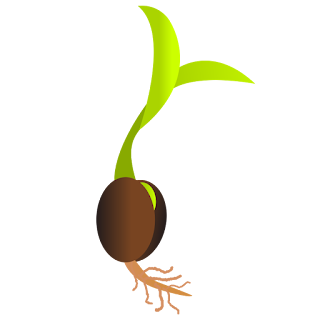You reap what you sow but seeds that you sow somehow tend to know that they have to send roots downwards and stems upwards. It does not matter in what position you sow seeds, they always grow the right way. How does a seed know which direction is right? From where does a small seed get all this intelligence? This question intrigued scientists for a long time.
The mystery- Suppose you have a seedling in a pot and you turn it upside down, then the stem will take a U-turn and start growing in upward direction against the gravity. So, the stems always grow in a direction opposite to gravity and roots always grow in the direction of gravity. In short, plants can sense gravity. In another experiment, a bunch of seedlings were attached to a disc and the disc was rotated at high speed. This rotating disc made seedlings feel a continuous centrifugal force radially outwards from the disc. Such a force can be called as simulated gravity. After continuous rotation, it was observed that plants responded to simulated gravity and their stems grew towards the center of the disc and roots outwards. Also, when seedlings were grown in space where there is almost no gravity, the roots grew in all the directions without any pattern. All these experiments proved that plants can sense gravitational pull. This phenomenon is known as gravitropism.
Gravitropism- Growth movement by a plant or fungus in response to gravity is known as gravitoprism.Most evidences support that growth in response to gravity is due to regulated movement of plant hormone called auxin. Now the next question is what causes this regulation of auxin in accordance with gravity? This is where statoliths come into picture.
Statoliths- These are parts of a special subset of cells present in the root tips. These statoliths are dense and can sediment according to the direction of gravity. This sedimentation transmits a signal which leads to reorientation of auxin efflux carriers and subsequent redistribution of auxin in the root. And this change in concentration of auxin causes roots to grow in the direction of gravity. Similarly, statoliths are also found in stems and guide their growth in direction opposite to gravity. But gravity is not the only thing which affects the direction of plant growth.
Phototropism- It is the growth of an organism according to a light stimulus. It can cause a plant to grow towards light (positive phototropism) or it may cause growth away from light (negative phototropism). Here also auxin plays an important rule by changing the growth of cells according to light stimulus.
So, a tiny seed not only contains a life in an embryonic form but we know now that it also knows how to reach out for the sky but keeping feet on the ground.
References-
http://www.npr.org/sections/krulwich/2012/06/21/155508849/how-do-plants-know-which-way-is-up-and-which-way-is-down
http://blogs.scientificamerican.com/artful-amoeba/roots-down-shoots-up-but-how-does-a-plant-know-which-is-which/
https://en.wikipedia.org/wiki/Gravitropism
https://en.wikipedia.org/wiki/Phototropism


Wow..plants are so intelligent..
ReplyDelete